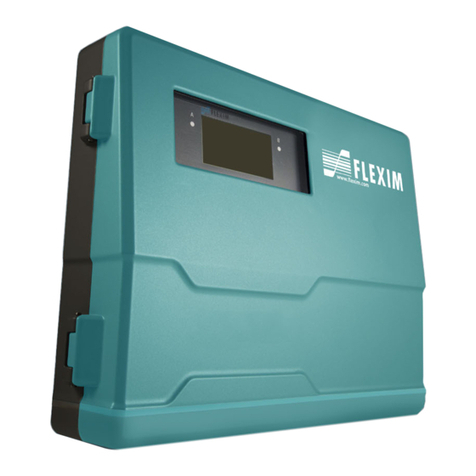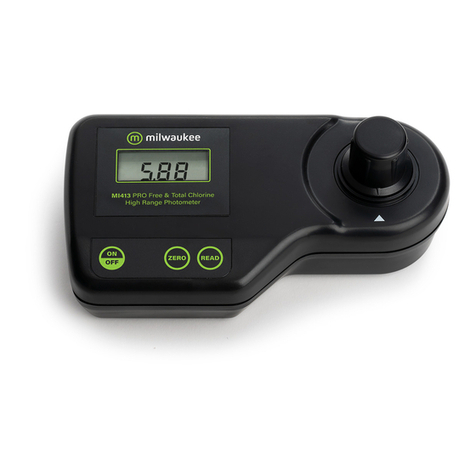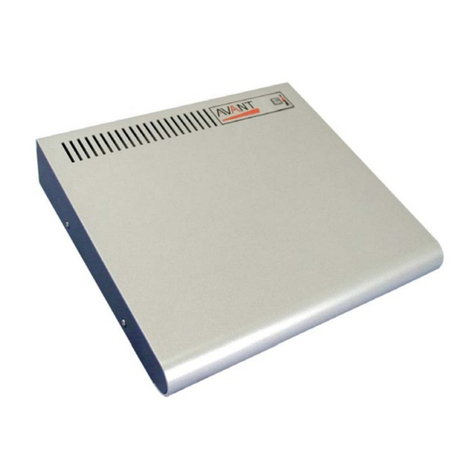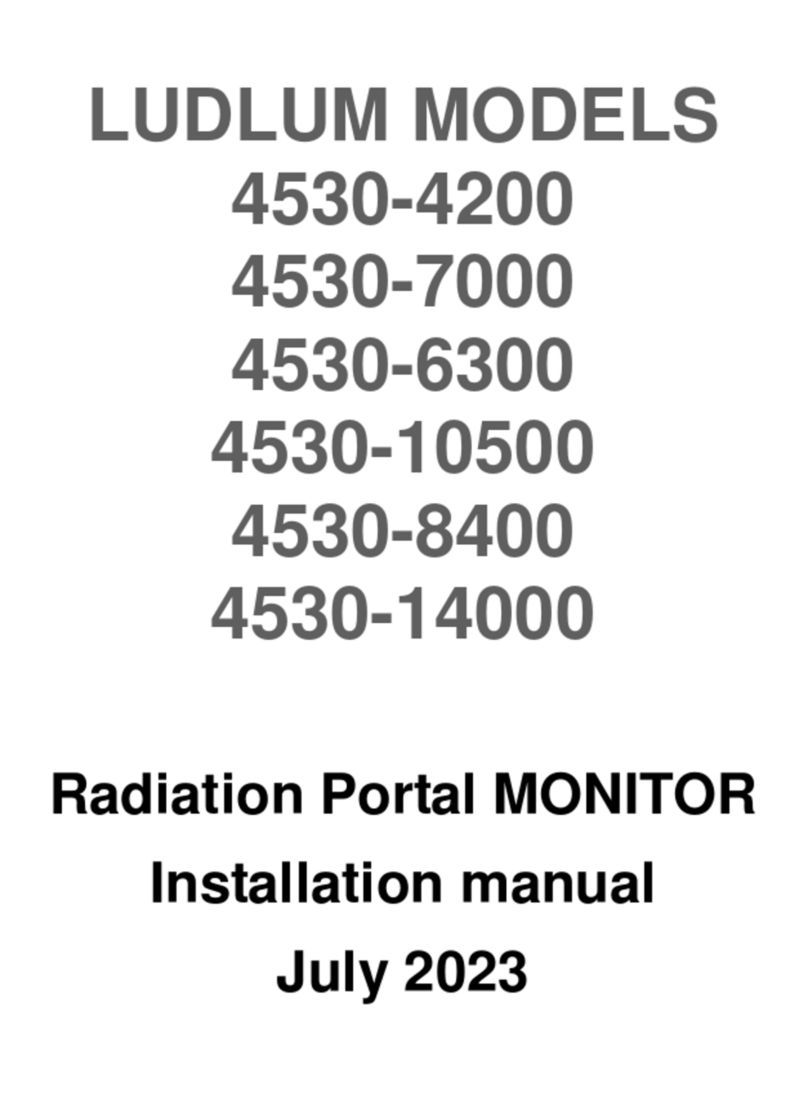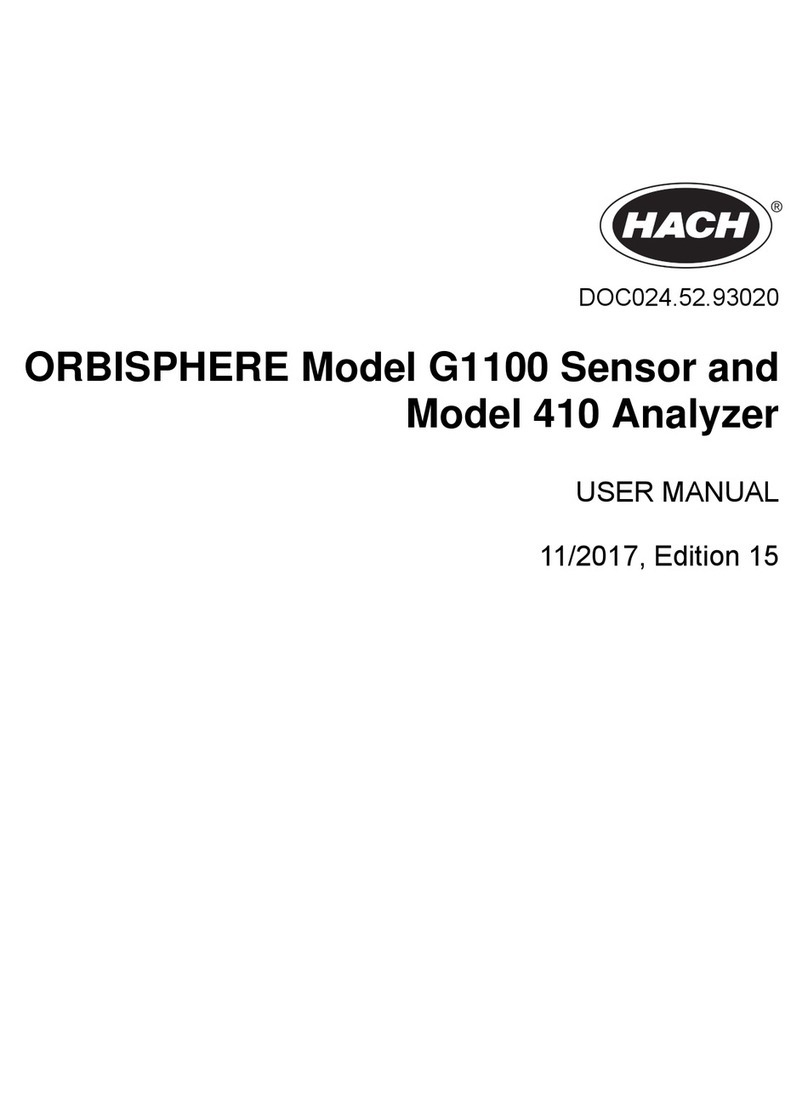General Photonics PolaDetect POD-001 User manual

Document #: GP-UM-POD-001-13 Page 1 of 8
POD-001
PolaDetect
™
In-line high speed polarimeter
Operation Manual
August 31, 2005
General Photonics Corp. Ph: (909) 590-5473
5228 Edison Ave. Fax: (909) 902-5536
Chino, CA 91710 USA www.generalphotonics.com

Document #: GP-UM-POD-001-13 Page 2 of 8
Table of Contents:
Section 1 Specifications 3
Section2Overview 4
Section 3 Device description 4
3.1 Optical Interface 5
3.2 Electrical Interface 5
Section 4 Operation Instructions 7
4.1 Getting started 7
4.2 Comparing the results with a polarization
measurement instrument 8

Document #: GP-UM-POD-001-13 Page 3 of 8
Section 1. Specifications:
Physical Features:
Dimensions 1.45” (L) ×0.80” (W) ×0.58” (H) for
optical module
125 mm (L) ×50 mm (W) for preamplifier
board
Input Fiber Single mode SMF-28 or compatible
Output Fiber PM fiber or single mode fiber
Fiber Connector FC/PC, FC/APC, SC/PC, or SC/APC
Number of Electrical Connection Pins 10-pin without preamplifier
20-pin with preamplifier
Optical Characteristics:
Insertion Loss 0.8 dB typical, 1.2 dB max.(@1550 nm)
Return Loss 55 dB
PDL 0.25 dB max.
PMD 0.1 ps max.
Input Optical Power Sensitivity 5 µW
Max. Input Optical Power 5 mW
Analog Dynamic Range 30 dB
Analog Bandwidth 1.5 MHz
Operation Wavelengths11550 +/- 50 nm, 1310 +/- 50 nm
Wavelength Dependent Loss (WDL) 0.15 dB (across C-band)
SOP Accuracy at Calibration Wavelengths21% max.
DOP Accuracy at Calibration Wavelengths2+/-2% max.
Operation Temperature 0° to 40 °C
Storage Temperature -40 °C to 85 °C
Damage Power 300 mW min.
Electrical Characteristics:
Power Supply +/- 12 volts/0.2 A
Maximum Voltage +/- 15 volts
Output Connector 10-pin without preamplifier
20-pin with preamplifier
Note:
1. Calibration matrices are provided for C-band operation around 1550 nm. Contact
General Photonics if the intended operation wavelength is outside C-band.
2. Measurement is against Agilent 8509C polarization analyzer.

Document #: GP-UM-POD-001-13 Page 4 of 8
Section 2. Overview:
General Photonics’ in-line polarimeter (PolaDetect) is specially designed for high-speed,
low cost polarization monitoring without interrupting data traffic. It outputs four voltage
signals for calculating both the degree of polarization (DOP) and the state of polarization
(SOP) of the light passing through the device. The measurement applies to the state of the
light at the input end of the polarimeter. A calibration matrix is provided with every
device at a specific wavelength for the calculation.
PolaDetect is ideal for integrating into polarization monitoring and polarization
stabilization modules to increase their operation speeds. It can also be used in
polarization characterization instruments. An integrated preamplifier circuit board
provides analog signals for SOP/DOP calculation, feedback control, and computer
interface.
Section 3. Device description
General Photonics’ Polarimeter includes four photodetectors, which output four
photovoltages (or photocurrents) for polarization analysis. The SOP and DOP of an input
light signal can be readily calculated using the four photovoltages and a 4x4 calibration
matrix. In general, the calibration matrix is wavelength dependent, so calibration matrices
are provided at 10 nm intervals. For example, for the 1550 nm band, five calibration
matrices are provided: for 1520 nm, 1530 nm, 1540 nm, 1550 nm, and 1560 nm
operation, respectively. Each matrix is for a wavelength band of +/- 5 nm.
Fig. 1 Photograph of a PolaDetect
NOTE: the resulting SOP is that at the input entrance of the polarimeter.
As illustrated in Fig. 1, PolaDetect consists of two main parts: the optical module and the
electronic preamplifier board.

Document #: GP-UM-POD-001-13 Page 5 of 8
3.1 Optical interface
1. The optical module has two fiber pigtails: one for the input and the other for the
output.
2. An arrow (“Æ”) sign is marked on the side of the package to indicate the direction of
the input light beam.
3. Fiber connectors can either be FC/PC or FC/APC per customer specification.
4. Coordinate orientation is marked on the output face of the device. The measured
Stokes parameters are based on this coordinate system, as shown in Table I. In
addition, for the PM fiber output option, the slow axis is aligned with the 0° vertical
line.
Table I
Stokes parameter (s1,s2,s3) State of Polarization (SOP)
(1,0,0) Linear SOP oriented at 45°
(-1,0,0) Linear SOP oriented at –45°
(0,1,0) Linear SOP oriented at 0°
(0,0,1) Right hand circular SOP
3.2 Electrical interface:
Two models are available. POD-xx-xx-01 has no preamplifier circuit while POD-xx-xx-
02 does. POD-xx-xx-01 is for OEM customers who have mastered the art of polarization
analysis and will perform their own calibrations for their power detection circuits.
General Photonics will only provide the calibration for the POD-xx-xx-02 with an
integrated preamplification circuit designed and fabricated by General Photonics.
1. For POD-xx-xx-01, there are 10 pins on the bottom side of the package. +iand –iare
the output from detector # i, where i = 1, 2, 3, 4 respectively. The last two pins are
ground.
1+ 1- 2- 2+ 3- 3+ 4- 4+ GND GND1+ 1- 2- 2+ 3- 3+ 4- 4+ GND GND
Fig. 2a Pin locations on the electronic output connector for the POD-001 (back side view)

Document #: GP-UM-POD-001-13 Page 6 of 8
Fig. 2b: Pin locations for the electrical output connector for the POD-002.
2. For POD-xx-xx-02, there is a 20 pin connector for signal output and power supply
input. The pin assignment is listed in Table II.
Table II
Pin 1 NC
Pin 2 GND
Pin 3 NC
Pin 4 GND
Pin 5 V4
Pin 6 GND
Pin 7 V3
Pin 8 GND
Pin 9 V2
Pin 10 GND
Pin 11 V1
Pin 12 GND
Pin 13 +12V
Pin 14 GND
Pin 15 GND
Pin 16 GND
Pin 17 -12V
Pin 18 GND
Pin 19 NC
Pin 20 GND
PolaDetectTM
General Photonics
High speed polarimeter
Patent pending
O O O O O O O O O O
O O O O O O O O O O
19 17 15 13 11 9 7 5 3 1
20 18 16 14 12 10 8 6 4 2

Document #: GP-UM-POD-001-13 Page 7 of 8
Section 4. Operation Instructions
4.1 Getting started
Fig. 3. An example setup for using the PolaDetect polarimeter.
Fig. 3 illustrates an example setup using General Photonics’ PolaDetect. In the setup, an
optional reference polarization analysis instrument can be used to verify the accuracy of
the PolaDetect. An analog-to-digital converter card (A/D card) is used to convert the
analog output signals from the PolaDetect into digital signals so that a computer or
microprocessor can be used to calculate the SOP and DOP of the input light using the
following formula:
.
⎥
⎥
⎥
⎥
⎦
⎤
⎢
⎢
⎢
⎢
⎣
⎡
⎥
⎥
⎥
⎥
⎦
⎤
⎢
⎢
⎢
⎢
⎣
⎡
=
⎥
⎥
⎥
⎥
⎦
⎤
⎢
⎢
⎢
⎢
⎣
⎡
=
⎥
⎥
⎥
⎥
⎦
⎤
⎢
⎢
⎢
⎢
⎣
⎡
4
3
2
1
44434241
34333231
24232221
14131211
4
3
2
1
3
2
1
V
V
V
V
mmmm
mmmm
mmmm
mmmm
V
V
V
V
M
S
S
S
So
(1)
0
2
3
2
2
2
1/SSSSDOP ++= (2)
where V1, V2, V3, and V4 are the photovoltages derived from the four photodetectors, and
M is a 4 × 4 calibration matrix. With this matrix, the calculated SOP is the SOP of the
light at the input entrance of the device. Note that
S
oindicates the optical power at the
V1V2V3V4
PolaDetect
A/D card
Reference polarization
analysis instrument
Computer
Light
source
Optional
Polarization
controller Pol. controller

Document #: GP-UM-POD-001-13 Page 8 of 8
output end of the device (actual output power) in mW. The input optical power
P
in of the
device in dB is:
P
in(dB)=
S
o(dB)+
I
L(3)
where IL is the insertion loss of the device, which is provided in the data sheet of every
PolaDetect unit.
In general, the calibration matrix is wavelength dependent. Each matrix is sufficiently
accurate for wavelengths within +/- 5 nm of the specified wavelength. General Photonics
provides 5 matrices, at 1520 nm, 1530 nm, 1540 nm, 1550 nm, and 1560 nm,
respectively, for C-band operation. The file name for each matrix is
Matrix_xxxxnm_xxx-x-xxx.xls, where xxxxnm is the wavelength band of the device and
xxx-x-xxx.xls is the series number.
4.2 Comparing the results with a polarization measurement instrument
To verify the performance of General Photonics’ PolaDetect against a reference
polarization instrument, the setup shown in Fig. 3 may be used. However, coordinate
alignment procedures must be performed before the measurement, because the output
fiber of the PolaDetect has some residual birefringence which causes the SOP to change.
Contact General Photonics for details.
Table of contents
Popular Measuring Instrument manuals by other brands
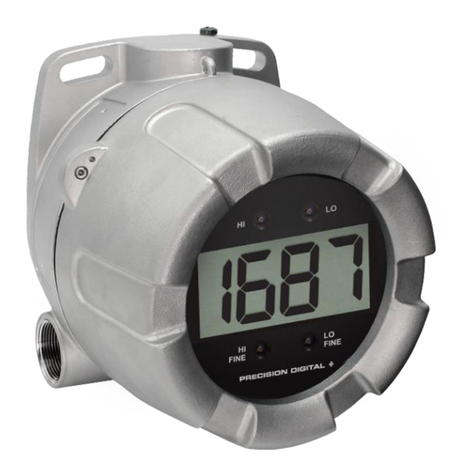
Precision Digital Corporation
Precision Digital Corporation ProtEx PD6870-SS instruction manual
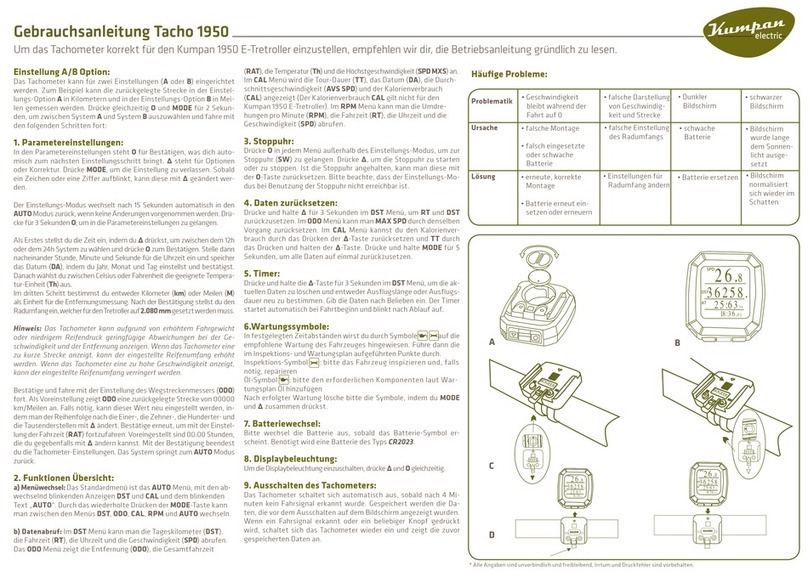
Kumpan
Kumpan 1950 user manual

Earthworks Audio
Earthworks Audio M30 instructions
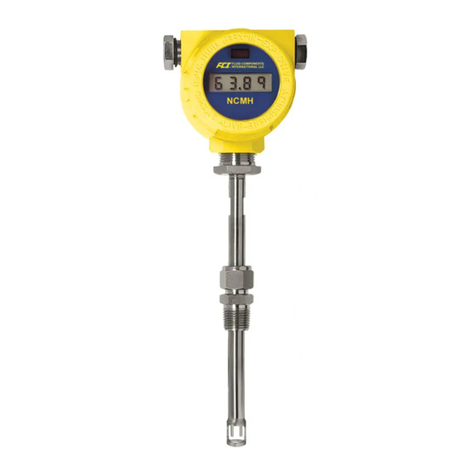
FCI
FCI ST50 Installation and operation guide
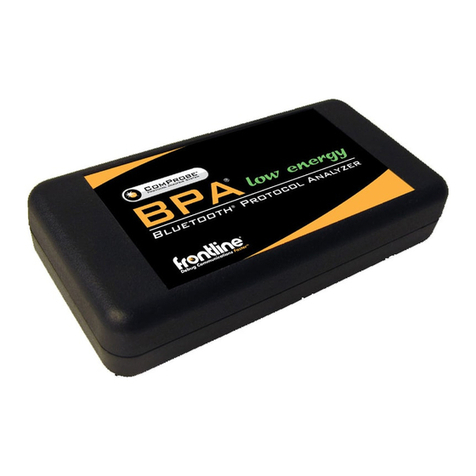
Teledyne Lecroy
Teledyne Lecroy BPA quick start guide

Topcon
Topcon BM-9A instruction manual

Blancett
Blancett B2800 Standard Programming and installation manual

International Light Technologies
International Light Technologies BiliBlanket ILT750-BILI454 Operation manual

New Cosmos Electric
New Cosmos Electric SDM-72 instruction manual

Wetekom
Wetekom 817914 instruction manual
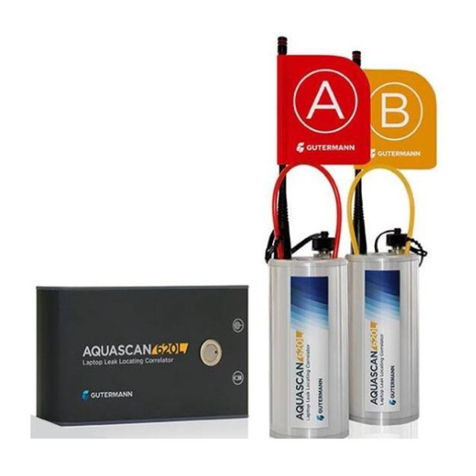
Gutermann
Gutermann AQUASCAN 620L operating manual
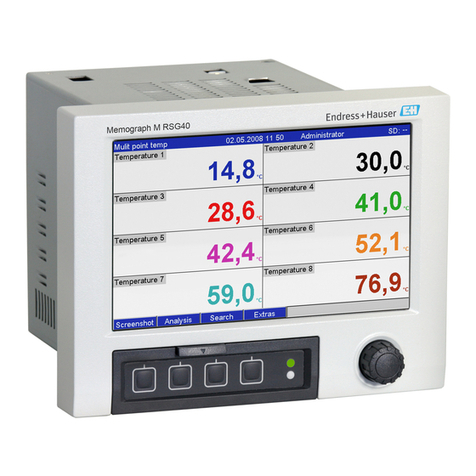
Endress+Hauser
Endress+Hauser Memograph M RSG40 technical information
